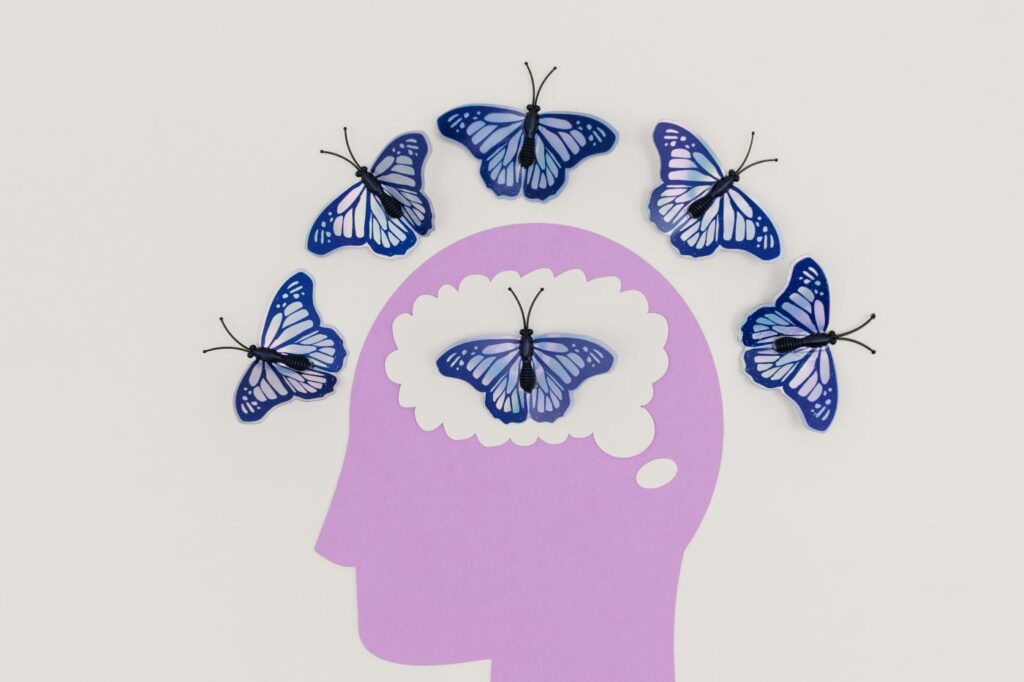Expressive Arts Therapy
Discover the Incredible Effects of Art Therapy on the Brain
Art therapy is a powerful form of expression that goes beyond mere artistic skills. It delves into the depths of the brain, unlocking emotions, memories, and thoughts in a unique and therapeutic way.
But have you ever wondered how art therapy actually affects the brain? In this article, we explore the fascinating relationship between art therapy and the brain, shedding light on the neuroscience behind this transformative practice.
Understanding the Brain and Its Response to Art
The human brain is a very sophisticated organ that regulates every thought, emotion, and action. It is made up of billions of neurons that create complex networks that control a variety of cognitive activities. When we participate in art therapy, these networks are activated in unique ways, having a significant impact on our mental and emotional well-being.
Art therapy stimulates several sections of the brain, including the prefrontal cortex, limbic system, and visual processing centers. As we choose colors, forms, and materials, the prefrontal cortex, which is in charge of decision-making and emotional regulation, becomes activated. This activation can help people become more aware of themselves and communicate their emotions.
Art therapy also activates the limbic system, which is known as the brain’s emotional center. This area is important for processing emotions and controlling our responses to them. By participating in art therapy, we can access this emotional processing area, allowing us to express and explore our emotions in a safe and nonverbal setting.

The Impact of Art Therapy on the Brain
According to research, participating in art therapy can increase the synthesis of feel-good neurochemicals such as dopamine and endorphins, resulting in improved mood, less stress, and an overall sense of wellbeing. When we produce art, our brain releases dopamine, a chemical linked to pleasure and reward. This dopamine release not only makes us happy, but it also stimulates us to keep working on our creative projects.
Art therapy also improves neuroplasticity, or the brain’s ability to alter and adapt in response to experiences. By participating in art therapy, we create new neural connections and pathways in the brain, resulting in increased cognitive functioning. This can help us improve our problem-solving abilities, creativity, and general mental flexibility.
Art Therapy and Emotional Well-being
One of the most prominent advantages of art therapy is its effect on emotional well-being. Art therapy provides a secure environment for people to express and process their feelings without the need of words. Individuals can externalize their innermost thoughts and feelings by using colors, forms, and textures, providing insight into their emotional states.
Art therapy can also help people manage and control their emotions. Individuals can experiment with different ways of expressing their feelings by using various art materials and techniques. This technique can help you gain a better awareness of your emotions and create healthier coping mechanisms.
Furthermore, art therapy can be especially effective for people dealing with mental health difficulties like despair and anxiety. The process of making art can be used to soothe and relax oneself, lowering stress symptoms and producing a sense of peace.

Art Therapy and Cognitive Functioning
In addition to its impact on emotional well-being, art therapy has been demonstrated to improve cognitive function. Engaging in art-making activities demands the brain to solve problems, make decisions, and process visual-spatial information.
Art therapy can help with cognitive abilities such as attention, concentration, and memory. Individuals who focus on the creative process might improve their capacity to concentrate and remain present in the moment. This is especially useful for people who have attention deficit hyperactivity disorder (ADHD) or age-related cognitive loss.
Furthermore, art therapy has been shown to improve visual-spatial processing skills. Individuals’ ability to receive and understand visual information can be improved by experimenting with various art materials and approaches. This can have a good impact on many aspects of life, including traversing physical locations and understanding visual representations.
Art Therapy and Stress Reduction
Stress has become a major concern in today’s fast-paced culture. Fortunately, art therapy is a strong stress reliever. Art-making activities can help people relax and unwind by moving their attention away from tensions and toward the creative process.
When we produce art, our brain enters a state of flow, in which we are completely involved and interested in the task at hand. This condition of flow encourages tranquility and can assist folks in achieving a state of relaxation. Art-making involves repetitive and rhythmic movements that might have a meditative impact, further decreasing stress levels.
Art therapy can also be used as an emotional release, allowing people to express their tension and worry via their artwork. Individuals who externalize their emotions visually might acquire control of their tension and find relief in the creative process.

Art Therapy and Trauma Recovery
Trauma can have a significant impact on the brain and overall well-being. Art therapy is widely acknowledged as a powerful technique for trauma healing, allowing people to process and heal from their experiences.
Art therapy can help people access and express difficult-to-articulate trauma-related feelings. Individuals can explore their trauma narratives in a safe and non-threatening setting by using imagery, symbolism, and metaphor. This procedure might result in a stronger sense of empowerment and healing.
In addition to emotional healing, art therapy can help people regain a sense of safety and control. Individuals who engage in the creative process can make decisions, create boundaries, and discover their resilience. This is especially useful for people who have suffered a loss of control as a result of their trauma.
Art Therapy as a Form of Self-expression
Art therapy offers a unique opportunity for self-expression and self-discovery. Individuals can utilize colors, shapes, and textures to communicate their thoughts, feelings, and experiences in a nonverbal manner.
For people who struggle with verbal communication, art therapy provides an alternate form of expression. Individuals can use the creative process to visually communicate their inner world, overcoming language’s limits. This can be especially useful for people with autism spectrum disorder or other communication impairments.
Furthermore, art therapy can help people reconnect with their true selves and explore their identities. Individuals can use the creative process to connect with their intuition and examine their values, beliefs, and objectives. This process of self-reflection can lead to increased self-awareness and personal development.

Incorporating Art Therapy into Your Life
Art therapy is not restricted to formal therapy sessions. You can incorporate art therapy into your daily routine to improve your mental and emotional health. Here are a few ways you can engage in art therapy independently:
- Start an art journal: Set aside time each day to create in an art journal. You can use different art materials and techniques to express your thoughts, feelings, and experiences.
- Join a community art class: Participating in a community art class can provide you with the opportunity to engage in art-making activities alongside others. This can foster a sense of connection and provide support and inspiration.
- Create a vision board: Collect images, words, and symbols that resonate with your goals and aspirations. Arrange them on a board or canvas to create a visual representation of your dreams and aspirations.
Remember, the goal of art therapy is not to create a masterpiece but to engage in the creative process and explore your inner world. Embrace the process of creation and allow it to guide you on your journey of self-discovery and healing.
Conclusion
Art therapy is an effective technique that can have a significant impact on the brain and overall well-being. Individuals who engage in art-making activities can gain access to the brain’s complex network of emotions, perception, and cognition. Art therapy increases the generation of feel-good neurochemicals, encourages neuroplasticity, and improves emotional and cognitive functioning.
Whether you want to relieve tension, recover emotionally, or express yourself, art therapy provides a unique and transforming experience. So, why not take up a paintbrush or pencil and start your own art therapy journey? Discover the power of art therapy and the possibilities within your own mind.
Trusted Health, Wellness, and Medical advice for your well-being



